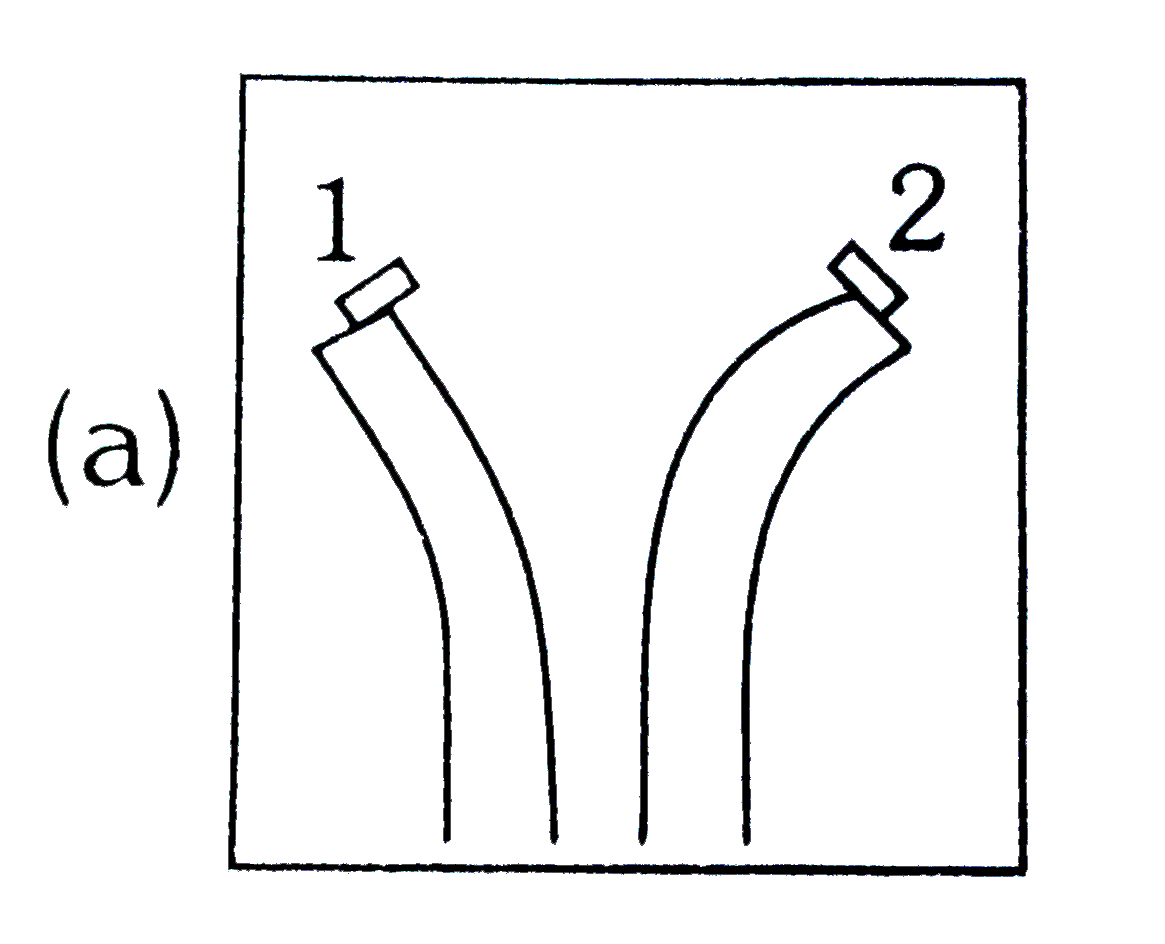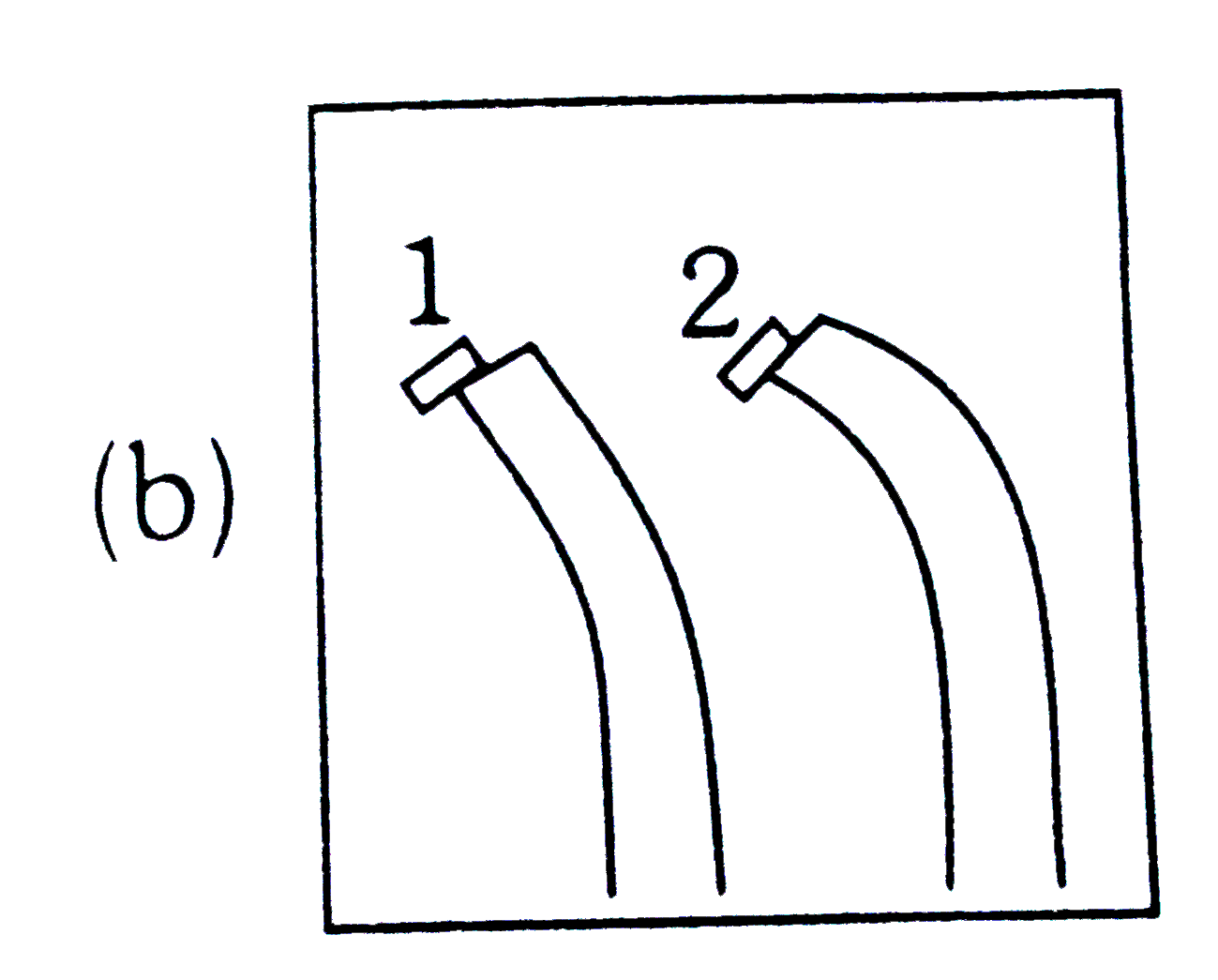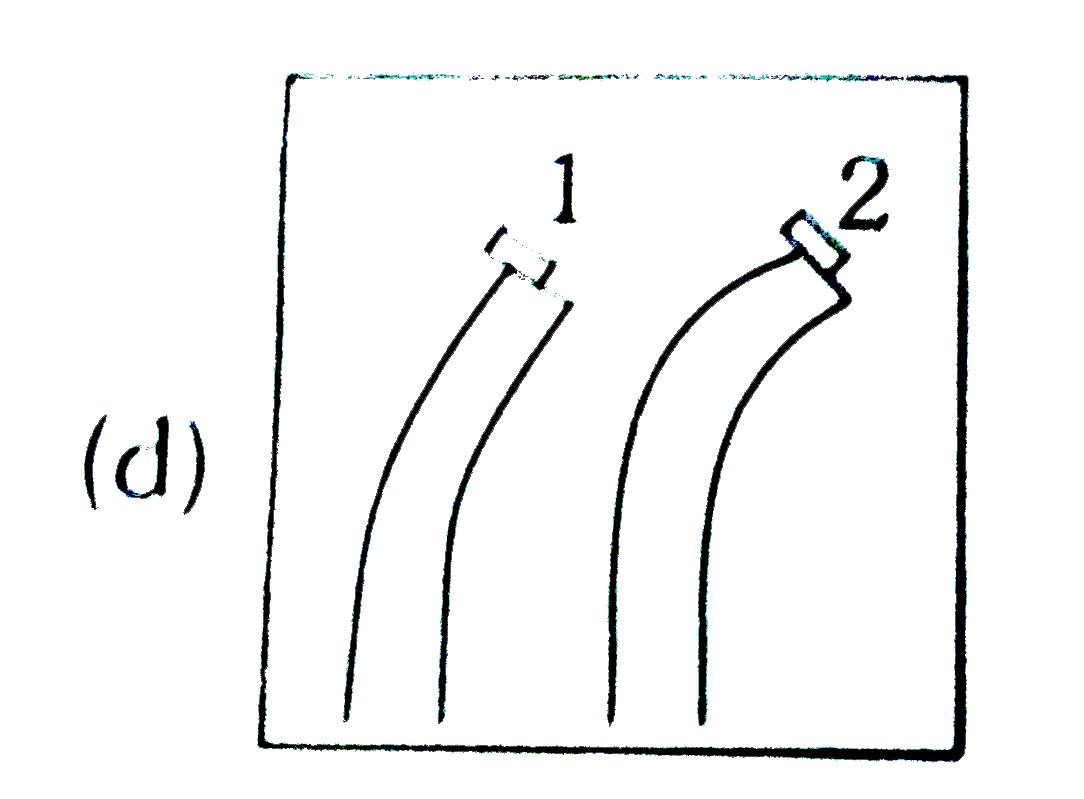Dr. F. Went noted that is coleoptile tips were removed and placed on agar for one hour , the agar would produce a bending when placed on one side of freshly cut coleoptile stumps .Of what sighifcance is this exeriment
It demonstrated polar , movement of auxins
It made possible the i~olation and ex- act identification of auxin
It is the basis for quantitative determi- nation of small amounts of growth-pro- moting substances.
It supports the hypothesis that IAA is auxin
Step by step video & image solution for Dr. F. Went noted that is coleoptile tips were removed and placed on agar for one hour , the agar would produce a bending when placed on one side of freshly cut coleoptile stumps .Of what sighifcance is this exeriment by Biology experts to help you in doubts & scoring excellent marks in Class 12 exams.
Updated on:21/07/2023Topper's Solved these Questions
Similar Questions
Read the given passage carefully and answer the questions that follow by selecting the most appropriate options.
Long ago men spent most of their time looking for food. They ate anything they could find. Some lived mostly on plants. They ate the fruits, stems and leaves of some plants and the roots of others. When food was scarce, they ate the bark of trees. If they were lucky, they would find a bird's nest with eggs. People who lived near the water ate fish or anything that washed ashore, even rotten whales. Some people also ate insects and small animals like lizards that were easy to kill.
Later, men learned to make weapons. With weapons, they could kill larger animals or meat. These early people had big opetike. If they killed an animal, they would ink the blood, eat the meat and chew on the bones. When they finished the meal, there was nothing left.
At first, men wandered from place to place to find food. But when they began to grow plants, they stayed in one place and are what they could grow. They tamed animals, trained them to work and killed them for meat. Life was little better then, but there was still not much variety in their meals. Day after day, people are the same food.
Gradually, men began to travel greater distances. The explores who sailed unknown seas found new lands. And in these lands they found new food and spices and took them back home.
At first men wandered from place to place to find food. Then some of them began to stay in one place.Why?
View SolutionLong ago men spent most of their time looking for food. They ate anything they could find. Some lived mostly on plants. They ate the fruit, stems, and leaves of some plants and the roots of others. When food was scarce, they ate the bark of trees. If they were lucky, they would find a bird's nest with eggs. People who lived near the water ate fish or anything that washed ashore, even rotten whales. Some people also ate insects and small animals like lizards that were easy to kill.
Later, men learned to make weapons. With weapons, they could kill larger animals for meat. These early people had big appetites. If they killed an animal, they would drink the blood, eat the meat, and chew the bones. When they finished the meal, there was nothing left.
At first men wandered from place to place to find their food. But when they began to grow plants, they stayed in one place and ate what they could grow. They tamed animals, trained them to work, and killed them for meat, Life was a little better then, but there was still not much variety in their meals. Day after day people ate the same food,
Gradually men began to travel greater distances. The explorers who sailed unknown seas found new lands. And in these lands they found new food and spices and took them back home.
The Portuguese who sailed around the stormy Cape of Good Hope to reach China took back "Chinese apples", the fruit we call oranges today. Later, Portuguese colonists carried orange seeds to Brazil. From Brazil oranges were brought to California, the first place to grow oranges in the United States. Peaches and melons also came from China. So did a new drink, tea.
At first men wandered from place to place to find their food. Then some of them began to stay in one place. Why?
View Solution
Knowledge Check
Dr. F. Went noted that is coleoptile tips were removed and placed on agar for one hour , the agar would produce a bending when placed on one side of freshly cut coleoptile stumps .Of what sighifcance is this exeriment
AIt made possible the isolation and exact identification of auxin.BIt is the basis for quantitative determination of small amounts of growth promoting substances.CIt supports the hypothesis that IAA is auxin.DIt demonstrated polar movement of auxins.Two blocks of Agare 1 and 2 were kept in the positions hown in the diagram below for several hours and then transferred into tweo freshly cut coleoptiles

After two days of growth of the following would resultA B
B C
C D
D
Two blocks of Agare 1 and 2 were kept in the positions hown in the diagram below for several hours and then transferred into tweo freshly cut coleoptiles

After two days of growth of the following would resultA B
B C
C D
D
For months the old tanker, African Queen , lay turned over on her side, stuck fast in the sands off the coast of Maryland. She had run aground so badly that her owners had decided to leave her to her fate. It was considered Impossible to refloat her and the ship began to rust and sink deeper and deeper into the sands. Men frequently came out in small boats and removed any parts that could be sold-until two men decided to attempt the impossible : to float the African Queen once more. Both men were engineers and had no experience of ships so that few people thought they could succeed.
The men began by studying the exact state of the African Queen and came to the conclusion that she would float again if air was pumped into the tanks which were now full of sea water. A diver was sent down to examine the underside of the ship. In the cold, dark water he found an enormous hole in her side which had been torn when the ship ran aground. It was plain that nothing could be done until the hole was repaired. As no single sheet of steel would cover it, the men were obliged to order a great number of sheets which had to be joined together. For several weeks divers worked continually to close the hole. At times, the sea was so rough that it was difficult to go down, and on more than one occasion, they had to contend with sharks.
At last the hole was covered and the men began to pump the sea-water out of the ship's tanks. It seemed as if they were bound to succeed, for when the tanks were full of air, the African Queen began to stir in the water. The men could not understand why she still would not float until they discovered that her rudder was embedded in mud. Huge cranes were brought to haul the sunken rudder out and the ship was again afloat. By this time, the men were almost exhausted. They had worked ceaselessly for three months to save the African Queen and had succeeded when everyone thought they would fail. Now they stood on the bridge of the ship, tired but proud, as tugs brought the African Queen into the harbour.
Men frequently went out to the African Queen because
View SolutionWhat would happen to you frll along a straight tunnel through the center of Earth. The problem has been analyzed ever since Galileo considered it. However, the most enchanting version is the one about Alice where she falls down the rabbit hole in ''Alice in Wonderland'', which Lewis CArroll wrote to entrain the (real) Alice Liddell when she was a child. Here is a passage from Alice :
Either the well was very deep, or she fell very slowly, for she had plenty of time as he went down to look about her, and to wonder what was going to happen next. First, she tried to look down and make out what she was coming to, but it was too dark to see anything : then she looked at the sides of the well, and noticed that they were filled to see anything : then she looked at the sides of the well, and noticed that they were filled with cupborad and look - shelves , here and there she saw maps and pictures hung upon pegs. She took down a jar from one of the shelves as the passed : it was labeled ''ORANGE MARMALADE'', but to her great disappointment it was empty : she did not like to drop the jar, for fear of killing somebody underneath, so managed to put it into one of the cupboards as she fell past it ..... Down, down, down. Would the fall never come to end ? ''I wounder how many miles I' ve fallen by this time ?'' she said aloud. ''I must be getting somehere near the centre of the earth.'' If Alice did fall down a tunel to the center of the Earth, would she drift slowly enough to see or grab things along the way ? Would the gravitational force that pulled her downward wane during the descent ? These questions were hot topice in Carroll's time, but Gallileo had the correct explanation long before then.
What is the velocity of Alice at R/2 from centre of the earth.
View SolutionFor months the old tanker, African Queen , lay turned over on her side, stuck fast in the sands off the coast of Maryland. She had run aground so badly that her owners had decided to leave her to her fate. It was considered Impossible to refloat her and the ship began to rust and sink deeper and deeper into the sands. Men frequently came out in small boats and removed any parts that could be sold-until two men decided to attempt the impossible : to float the African Queen once more. Both men were engineers and had no experience of ships so that few people thought they could succeed.
The men began by studying the exact state of the African Queen and came to the conclusion that she would float again if air was pumped into the tanks which were now full of sea water. A diver was sent down to examine the underside of the ship. In the cold, dark water he found an enormous hole in her side which had been torn when the ship ran aground. It was plain that nothing could be done until the hole was repaired. As no single sheet of steel would cover it, the men were obliged to order a great number of sheets which had to be joined together. For several weeks divers worked continually to close the hole. At times, the sea was so rough that it was difficult to go down, and on more than one occasion, they had to contend with sharks.
At last the hole was covered and the men began to pump the sea-water out of the ship's tanks. It seemed as if they were bound to succeed, for when the tanks were full of air, the African Queen began to stir in the water. The men could not understand why she still would not float until they discovered that her rudder was embedded in mud. Huge cranes were brought to haul the sunken rudder out and the ship was again afloat. By this time, the men were almost exhausted. They had worked ceaselessly for three months to save the African Queen and had succeeded when everyone thought they would fail. Now they stood on the bridge of the ship, tired but proud, as tugs brought the African Queen into the harbour.
What was the danger which the divers faced ?
View SolutionWhat would happen to you frll along a straight tunnel through the center of Earth. The problem has been analyzed ever since Galileo considered it. However, the most enchanting version is the one about Alice where she falls down the rabbit hole in ''Alice in Wonderland'', which Lewis CArroll wrote to entrain the (real) Alice Liddell when she was a child. Here is a passage from Alice :
Either the well was very deep, or she fell very slowly, for she had plenty of time as he went down to look about her, and to wonder what was going to happen next. First, she tried to look down and make out what she was coming to, but it was too dark to see anything : then she looked at the sides of the well, and noticed that they were filled to see anything : then she looked at the sides of the well, and noticed that they were filled with cupborad and look - shelves , here and there she saw maps and pictures hung upon pegs. She took down a jar from one of the shelves as the passed : it was labeled ''ORANGE MARMALADE'', but to her great disappointment it was empty : she did not like to drop the jar, for fear of killing somebody underneath, so managed to put it into one of the cupboards as she fell past it ..... Down, down, down. Would the fall never come to end ? ''I wounder how many miles I' ve fallen by this time ?'' she said aloud. ''I must be getting somehere near the centre of the earth.'' If Alice did fall down a tunel to the center of the Earth, would she drift slowly enough to see or grab things along the way ? Would the gravitational force that pulled her downward wane during the descent ? These questions were hot topice in Carroll's time, but Gallileo had the correct explanation long before then.
The only explanation of Alice's small velocity can be air resistance she experinces. Choose the correct statement assuming that Alice falls with constant speed.
View SolutionWhat would happen to you frll along a straight tunnel through the center of Earth. The problem has been analyzed ever since Galileo considered it. However, the most enchanting version is the one about Alice where she falls down the rabbit hole in ''Alice in Wonderland'', which Lewis CArroll wrote to entrain the (real) Alice Liddell when she was a child. Here is a passage from Alice :
Either the well was very deep, or she fell very slowly, for she had plenty of time as he went down to look about her, and to wonder what was going to happen next. First, she tried to look down and make out what she was coming to, but it was too dark to see anything : then she looked at the sides of the well, and noticed that they were filled to see anything : then she looked at the sides of the well, and noticed that they were filled with cupborad and look - shelves , here and there she saw maps and pictures hung upon pegs. She took down a jar from one of the shelves as the passed : it was labeled ''ORANGE MARMALADE'', but to her great disappointment it was empty : she did not like to drop the jar, for fear of killing somebody underneath, so managed to put it into one of the cupboards as she fell past it ..... Down, down, down. Would the fall never come to end ? ''I wounder how many miles I' ve fallen by this time ?'' she said aloud. ''I must be getting somehere near the centre of the earth.'' If Alice did fall down a tunel to the center of the Earth, would she drift slowly enough to see or grab things along the way ? Would the gravitational force that pulled her downward wane during the descent ? These questions were hot topice in Carroll's time, but Gallileo had the correct explanation long before then.
If Alice reached her wonderland 21 minutes after the fall, (neglecting air resistance) the wouderland was
View Solution
